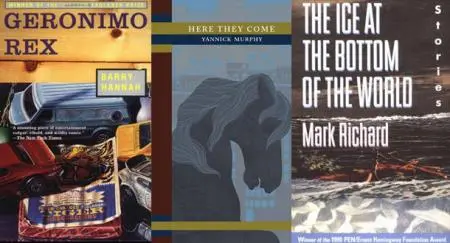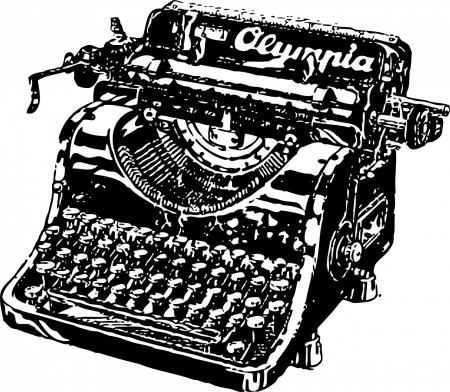Amy Hempel has a new book out.
This news raises one of two reactions from people.
The one I’m looking for is eyes open wide. Breath held.The kind of physical reaction that comes about when the internal feeling is that we’re lucky to be alive now, in this moment, when there’s another Amy Hempel book.
The reaction I get, always, is non-physical. It’s summed up in a single word: Who?
Amy Hempel Is Great
Let’s go here first. My purpose here isn’t to say that Amy Hempel isn’t important. To me, and to a shitload of other readers and writers, Amy Hempel’s first new book in a decade, Sing To It, is a big, big deal.
If you’ve never read Amy Hempel, I have a few suggestions:
1. Get your head out of your ass
2. Read “In The Cemetery Where Al Jolson Is Buried”
3. Read “In A Tub”
4. Read “The Harvest”
Everything I have to say about the death of minimalism, I say with sadness. I’m upset that the writers I love never get the attention they deserve. I work at a library, and I’m never happy when I run stats and see how my favorite minimalist authors are faring.
As for Amy Hempel, nothing would please me more than to see her book become a huge hit. In fact, let me do my part. I’ll give you a link to grab her book on Amazon. And I’ll throw it in a few more times throughout this column, just to make sure everyone gets a chance.
Nutshell: Let the record show I love Amy Hempel’s work on a deep and sincere level. Wait, no. Don’t “let” it show. Carve that shit into the record with the nastiest switchblade you can get your hands on.
Is This The End Of Minimalism?
Recognizing the end of an era is hard in the moment. Sure, decades later, it’s easy to put a pin in something. If we’d been asked at the time, we probably would’ve cited Load as the end of metal Metallica. But, in hindsight, it’s probably The Black Album.
I HOPE that time makes an idiot of me, but here’s what I THINK: Amy Hempel’s book might be the last gasp of great minimalist writing.
Perhaps I’ll be wrong. Perhaps minimalism is already dead. Or, perhaps it will die many years from now. Perhaps I’m fooled into thinking this way because Hempel’s book would make a fitting, gorgeous end to an era. Maybe it’s the beauty of ending with Sing To It that makes me so tempted to call minimalism’s end here and now.
But I don’t think so. I think the ending has been coming for some time.
A Very Subjective, Harebrained, Quick History of Minimalist Writing
If you want to know way too much about this and be confused, read Mark McGurl’s The Program Era. If you want to know just enough to be dangerous, try Chad Harbach’s essay "MFA vs. NYC." If you want to know even less than that and very likely have the knowledge delivered with a fart joke, read on.
Creative Writing MFA programs have been around for a bit, but it’s only recently that they’ve grown into something common. In 1975 there were 79 places you could go to get a creative writing MFA. There are now 854. That’s a ten-fold increase.
The MFA presents an interesting problem.
If I get a degree in mathematics, there are certain things that are expected of me. If I can’t find the area of a circle, I probably shouldn’t get a diploma. And hey, it’s reasonable. Structural engineers need to have certain areas of knowledge so they can...engineer structures. Because a bridge either works or it doesn’t.
But how do you manage something as subjective as creative writing? How do you decide whether or not an individual is good enough to get that sheepskin? (Just a note: “sheepskin” is slang for “diploma.” You’re thinking of “lambskin,” which is a condom. You weirdo.) There’s no straightforward test, no evaluation.
How do you, as McGurl put it, create an environment of “systematic creativity?”
Enter: Minimalism.

Minimalism is a style, and it’s a set of rules. Both of which come in handy when you’re sitting in front of a stack of short stories that need grading. Rather than delineate minimalism’s rules, which will just turn into an argument, I’ll put it like this: If you read enough short stories, you get a Spidey sense for short story collections that sound MFA-y. If they sound MFA-y, there’s a damn good chance you’re hearing shades of minimalism. If the author bio says they graduated from the Iowa Writers’ Workshop, you’re reading something with at least a whiff of minimalism. If someone calls the writing “Carver-esque,” you’re well inside the ballpark.
A ton of this came from the lab/classroom of Gordon Lish, Captain Fiction himself. You might know Lish for his most famous work, editing Raymond Carver’s stories down to the bones. But whether or not you know Lish’s name, you know him. Here’s a quick list of people Lish taught, edited, or published: Amy Hempel, Raymond Carver, Tom Spanbauer, Barry Hannah, Peter Christopher, Yannick Murphy, Christine Schutt, Diane Williams, Sam Lipsyte, Michael Kimball, Mark Richard, Will Eno, Dawn Raffel. Seriously, the names don’t stop.
These authors were recognized as “literary.” They were writers’ writers. They set the tone for MFA-centric literary fiction. For decades, when someone wrote literary fiction, these were the folks being imitated. If you took a creative writing class or a modern fiction class, these were the sorts of people you read. These were people who were published in places that mattered. Esquire, Playboy, The New Yorker, and respected literary journals.
Lish’s students also taught many writers themselves. Amy Hempel has made a long career of teaching, and Tom Spanbauer spent decades passing on Lish’s lessons in weekly workshops held in his home. Hempel continued the tradition in the east, Tom in the west. And most of us flocked to one of the two from somewhere in between, or we dreamed of doing so.
While it’s not the only school of thought that found its niche in higher ed and structured workshops, minimalism presents a set of guidelines for beginning writers, and those same guidelines can carry them through to mastery. This helped minimalism thrive in circles of beginning writers and legendary artists alike. It’s teachable, and it provides concrete criteria. It’s no wonder this was such a big thing for writers.
What about readers, though? What do they get out of it?
You could read a bunch more, or just
The Other Side
For readers, minimalism presents an active reading experience (more on this in a second). Without long, flowery metaphors, without adverbs, without abstraction, without descriptions of what things felt “like” and instead descriptions of how things actually felt. Minimalism has an urgency to it, a feeling of being in the place and in the moment where the story is happening. It feels very alive on the page. It feels intimate.
To paraphrase Tom Spanbauer, when you read a great story of this type, it feels like you’re picking up an old friend at the airport. You haven’t seen each other for years. You pick up your friend, go out for drinks, and two cocktails in, your friend says, “Okay, I have to tell you this story.” That’s the energy.
This is high-level, artistic storytelling that is accessible to the average reader. Gordon Lish instructed his students to “seduce the whole world” with their writing. And they did. They totally did.
To me, minimalism is like a great magic trick. When you watch a magician, it doesn’t look like he’s sweating. It’s not his goal to make the audience know how hard he worked on this trick. How much effort it took to develop, practice, and perform. When the trick is done for the audience, it looks effortless, beautiful, and simple.
A great minimalist story reads as effortless. The true minimalist writer isn’t trying to convince the reader that they worked hard. In fact, the hard work goes into obscuring the hard work. If a story sounds like a herculean effort, if a line “sounds written,” it’s no good. The reader shouldn’t even be thinking about the beauty of each line. They feel the story on their body.
People read to connect with other people. They want to feel like part of something, like they’re hearing a great story from a dear friend. They want experiences crafted with care, stories that make good use of their time. Minimalism provided that to a lot of people for a very long time.
Why do I think the movement is dying?
If you thought the last section was out there and subjective, buckle up.
It’s An Aging School

The 2000’s have been tough on a lot of the heroes of the minimalist movement:
Larry Brown 1951-2004
Grace Paley 1922-2007
Barry Hannah 1942-2010
Robert Stone 1937-2015
Katherine Dunn 1945-2016
Thom Jones 1945-2016
Denis Johnson 1949-2017
In addition, let’s look at the ages of some of its great practitioners:
Gordon Lish: 85
Mary Robison: 70
Mark Richard: 64
Robert Olmstead: 65
Lydia Davis: 71
Cormac McCarthy: 85
Tobias Wolff: 73
Ann Beattie: 71
Richard Ford: 75
Tom Spanbauer: 73
Sandra Cisneros, who did some minimalist work, is among the young in the group at “only” 64. Flannery O’Connor and Raymond Carver are long gone, rest their souls. Ernest Hemingway, the classic example, has been gone almost 60 years.
Minimalism is an aging movement. Which isn’t to say anything about its quality or the work that’s coming from the great artists still working in the minimalist tradition. And while there's a newer, second crop of minimalist writers, many of them worked in minimalism and moved onto other forms.
In looking at the field, we have to be honest. There’s not a lot of young blood.
Matters Of Fashion
Even Wikipedia is hip to one of minimalism’s key facets:
Readers are expected to take an active role in creating the story, to "choose sides" based on oblique hints and innuendo, rather than react to directions from the writer.
In other words, minimalist writing doesn’t tell a reader how to feel. It flat out refuses to do so.
I think this is out of style at the moment. I think we’re in an era where many people want to consume media (books, movies, etc.) that they fully understand, and they want to feel that they fully understand that media’s creator as well. Many consumers want a clear message, and they want a clear moral stance. Ambiguity is not in style. Truly flawed characters are not well-received by wide audiences.
Homogeneity
The writers tended to be a little demographically homogeneous in some ways. I think they often came off as MFA-toting snooty types, and there’s a lot of white folks.
Any movement that’s same-y ends up eating itself. People who are involved in minimalism start writing books that are mostly read by other people who are involved in it. Minimalist books, instead of being food for readers, become food for other minimalist writers. The circle closes, then shrinks.
Class Clash
Minimalists are an unfortunate casualty of the classic snobs versus slobs battle of books. They started as the slobs, often writing from a middle class or blue collar background, but as often is the case, those still working saw themselves become the snobs.
This isn’t entirely the fault of those writers. I genuinely think they’re hardworking, and I’m sure most of them are not wealthy. And let’s face it, when it comes to publishing, it’s a snobs versus snobs situation. But when it comes to snobbery, it’s not about reality. It’s about perception.
Being a writer of literary fiction, especially one who teaches at a college, comes with some hefty snob baggage. You and I know writing is hard work, but we also have to admit that it’s not like busting concrete or washing dishes. We think of it as tiring, but only until we sit and watch pros pack and move a 3rd floor apartment.
The minimalist movement might be tied so closely to its working-class roots that the perceived severance of those roots causes the trunk to die.
Bending Genre
The last few decades have seen a change in the significance of genre.
Look at Kurt Vonnegut. For a time, he was a sci-fi guy. If you went to a bookstore, that’s where you’d find him. Now? Now you’ll find him shelved with the literary folks.
The literary folks are bending too. We’ve seen a move away from looking at a book, seeing there’s a dragon in it, and dismissing it as total bullshit. A book can be literary AND have a werewolf. A book can be literary AND be a comic. We’ve seen the rise of writers like Aimee Bender, who wrote an entire literary novel on the premise that a woman could read the emotions of a cook by tasting their food.
It might be the case that minimalism as I recognize it is dead, but there’s a new mode of minimalism. For decades minimalism was used to tell mostly (forgive me) plain stories. Maybe the tools of minimalism are being applied to different types of stories. Maybe it has died, been resurrected, and I don’t recognize its new form yet.
Form And Function
I’m of the opinion that the sign of a great comic book is that it works best as a comic book. Watchmen is a great example. Watchmen is a classic comic because it uses the comics form to its full extent. It does things that movies and TV can’t.
Minimalism creates stories that could be made into movies and TV, but it doesn’t usually work. We could paw through the sack full of reasons for this, but the easy way to sum it up is that great minimalist stories are in their best form when they’re on the page. Adaptation is rarely additive. It rarely improves the work.
This is the greatest compliment I can pay to something like an Amy Hempel short story. A story like “In A Tub” is perfect as it is, and attempts to change it only diminish its power.
While it’s a great compliment, it comes with a problem. This is why you won’t see big-budget adaptations of minimalist classics. Which is why you won’t see minimalist books on bestseller lists the way you will more adaptable works. Which is why you won’t see them front-facing in bookstores. Which is why you won’t see them in the airport bookstore.
There are exceptions. Fight Club, Short Cuts, Jesus’ Son—all adapted into critically acclaimed movies. While they found their niche, the praise usually came after an initial hard belly flop. Not the sort of thing moneyed people want to put in theaters.
The Feeling
They say that you can feel the dying breath leave someone. That they’re at peace, finally.
Alternatively, you could hook someone up to monitoring equipment and find the exact moment that brain function ceases. But what does that really tell us? Does that adequately mark what it means to die?
The feeling I have that minimalism is dying didn’t start with numbers or facts, so it’s the hardest for me to talk about. That feeling is the reason I wrote this column, though.
As a fan of minimalist fiction, I spend a lot of time seeking it out. I find more and more that I’m looking into the past. The books I order are more yellowed. The Vintage Contemporaries I love look more and more dated. Some fetch outrageous prices because they’ve gone out of print, and it seems unlikely they’ll be back.
I can talk about objective reasons like I did above, and I can make some educated guesses. But none of it compares to the creeping feeling that minimalism is preparing to meet its maker.
Let's Sing To It
The title of Hempel’s new book comes from an Arabic saying: When danger approaches, sing to it.
It’s a stance for how to deal with life,” she says. “When there’s danger coming your way, you disarm it. It has a better result than meeting threat with threat.
It...is just a little too perfect, isn’t it?
We see what’s coming, and what can we do?
Let’s sing to it.
Get the book. Read the book. Read it out loud.
Review the book. Tell people about it. Buy it for your friends. Buy it for your parents. If you can’t, buy it for my mom. She loves Amy Hempel.
If the approaching danger is the death of minimalism, Hempel will do what she does best. She’ll make her stand. Disarm the threat. And sing to it.

About the author
Peter Derk lives, writes, and works in Colorado. Buy him a drink and he'll talk books all day. Buy him two and he'll be happy to tell you about the horrors of being responsible for a public restroom.







